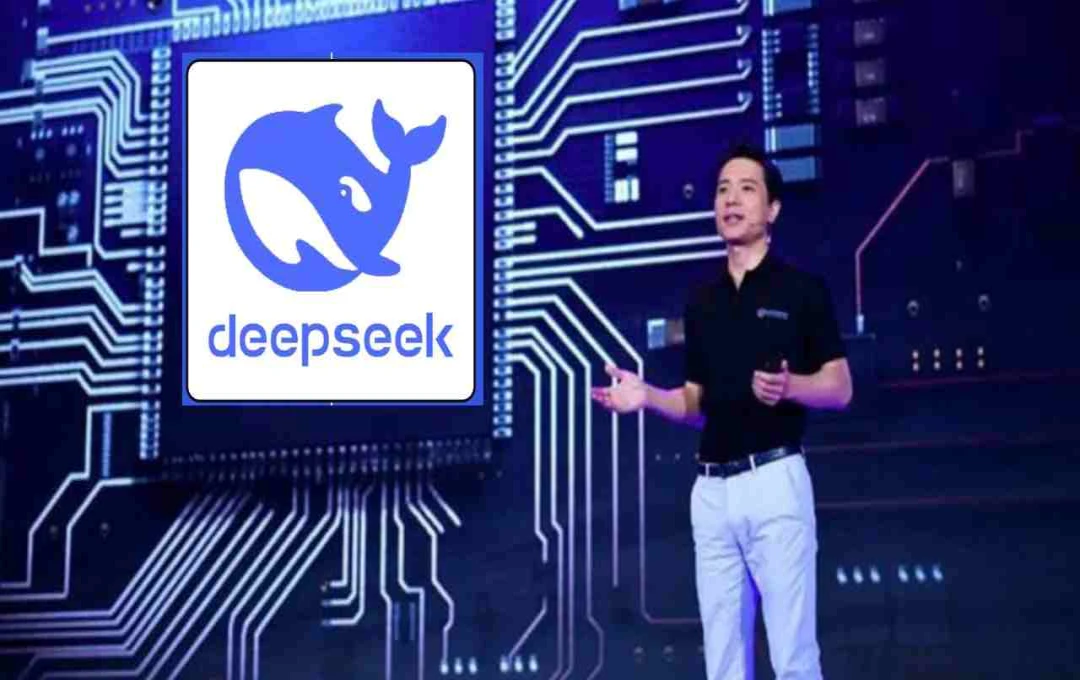DeepSeek AI, a once-prominent player in China's burgeoning AI industry, is experiencing a decline. Baidu co-founder Robin Li recently shed light on the reasons behind this downturn.
DeepSeek AI: Robin Li recently made a significant statement regarding the Chinese AI tool DeepSeek. He stated that DeepSeek, which initially caused a stir among leading Silicon Valley tech companies upon its launch, is now losing its luster. During a developer conference, Li highlighted a major shortcoming: while DeepSeek operates on a reasoning-based language model, differentiating it from other generative AI tools, its development pace and impact have significantly slowed since its initial launch.
Declining Demand for Text-Based Models
According to Li, text-to-text generative AI models like DeepSeek are rapidly losing relevance. A report in the Chinese Financial Times quoted Li as saying that users no longer want to be limited to text generation. Their expectations have increased; they now desire the creation of image, video, and audio content through text.
This has led to a surge in demand for text-to-image and text-to-video technologies, leaving text-only models behind. Li categorized models like DeepSeek as low-performance, stating that their popularity will remain limited until they incorporate multi-modal capabilities.
A Meteoric Rise, Now Facing Challenges
DeepSeek made a spectacular debut in January 2025 with its R1 model. Its launch garnered significant attention, even in Silicon Valley. DeepSeek was considered a game-changer in China's large language model (LLM) space. Its reasoning and logical thinking capabilities distinguished it from other Chinese AI models.

However, a b start isn't enough to sustain success in the tech world. Continuous innovation and adaptation to evolving user demands are crucial. DeepSeek is currently grappling with this challenge.
Baidu's Multi-modal Strategy
Recognizing this shifting landscape, Baidu has shifted its focus away from DeepSeek. The company recently launched new generative AI models, Ernie 4.5 Turbo and X1 Turbo. Both models boast multi-modal capabilities, meaning they can process and generate not only text but also images, audio, and video.
This move demonstrates Baidu's shift away from text-only AI projects like DeepSeek. The company is now focusing on AI solutions that support broader use cases, a necessity for future market dominance.
Increasing Competition in the Chinese AI Market
DeepSeek faces challenges not only from its own limitations but also from the rapidly increasing competition in the Chinese market. Alibaba has launched its AI model, Qwen, proficient in text generation, image, and video processing. Similarly, new players like Klinga AI are offering superior options in text-to-video and text-to-image technologies.
While Baidu has attempted to integrate DeepSeek into several of its services, such as the Qianfan platform, the lack of multi-modal capabilities hinders DeepSeek from maintaining its previous influence.
The Importance of Multi-modal AI
Today's users are no longer satisfied with simple text chats or article generation. Image, video, and audio content are increasingly prevalent in social media, digital marketing, entertainment, gaming, and even online education. This limits the scope of text-only AI models. Multi-modal AI models offer users more interactive, effective, and realistic experiences.
For example, a user writing a story might want an accompanying visual generated instantly. Or a user might want to create a short video clip from a brief text input. This is why major players like ChatGPT are introducing audio, visual, and text multi-modal capabilities with models like GPT-4o.

DeepSeek's Path Forward
DeepSeek still has an opportunity to adapt its strategy and rapidly adopt multi-modal capabilities. If DeepSeek successfully incorporates features like text, image, and video generation, it could regain a b market position. Furthermore, DeepSeek should leverage the growing influence of open-source models and strengthen its support network within the developer community.














